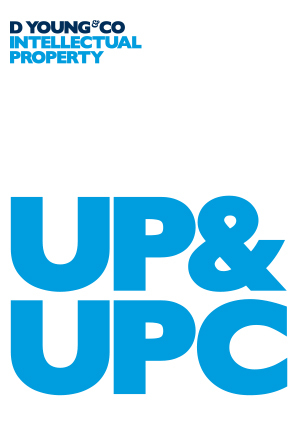First UPC infringement decision for second medical use claims
A recent first decision on infringement of a second medical use patent indicates how the Unified Patent Court (UPC) may treat this type of claim.
Background
Article 54(5) EPC allows purpose-limited product claims (so called “second medical use claims”) to protect a known product for a specific therapeutic application, provided that application is novel and inventive.
Second medical use claims can be very desirable, given their potential protection for the use of a drug in a new therapeutic method. However, the extent of third party activities prohibited by second medical use claims has historically been somewhat unclear, and has been the subject of several recent decisions across Europe. Consequently, a range of evolving standards has been applied to the question of infringement, varying by jurisdiction.
A common practice by generic pharmaceutical companies in an attempt to avoid infringing second medical use claims is “skinny labelling”, where protected indications are “carved out” of a product’s summary of product characteristics (SmPC) to avoid infringement related to those indications. Such practice was supported by the UK Supreme Court in Warner-Lambert v Actavis, as discussed in our article “Warner-Lambert Appeal: Swiss form claims & skinny labels”. However, there are still unanswered questions in many jurisdictions as to how effective such a practice is to avoid infringement.
Complicating the issue is that many decisions in Europe are based on the previously used “Swiss-type” format of second medical use claim, which was replaced with the updated EPC 2000 revised second medical use claim. Interpretation of these claim variants also differs by jurisdiction.
The UPC has now issued its first decision on the matter, providing a key first-instance insight into how this body will deal with the question of infringement of second medical use claims.
The case at hand: Sanofi & Regeneron v Amgen (UPC CFI 505/2024)
The Düsseldorf Local Division of the UPC very recently decided on the infringement of Regeneron’s European Patent EP3536712B1, for which Sanofi is the exclusive licensee. Sanofi and Regeneron alleged infringement of the patent by the Amgen group. In response, Amgen filed a counterclaim for revocation on the basis that the patent was invalid on grounds of added matter, lack of novelty, lack of an inventive step and lack of sufficiency.
The independent second medical use claim at issue relates to an anti-PCSK9 antibody for use in reducing serum lipoprotein(a) (Lp(a)) levels in particular patients (notably, this claim is in the EPC 2000 purpose-limited product format, so avoids complications arising from the interpretation of Swiss-type claim format), making it a claim to a further specific treatment for a known use, and is provided in abbreviated form below:
"A pharmaceutical composition comprising a PCSK9 inhibitor for use in reducing lipoprotein(a) (Lp(a)) levels in a patient…wherein the PCSK9 inhibitor is an antibody or antigen-binding fragment thereof that specifically binds PCSK9, wherein the patient is not on a therapeutic statin regimen at the time of administration of the composition."
Validity
When considering the validity of the patent, the court confirmed that the use in reducing Lp(a) levels was deemed a medical use, and was novel over the known prior art use in lowering LDL-C levels. On the novelty of second medical use claims more generally, and in accordance with Article 54(5) EPC, the court confirmed:
"A substance or composition X for any “specific use” in a method for treatment of the human body can be patentable, provided the specific use is novel."
Overall, the court found the counterclaim for revocation was unfounded on all grounds, based on the facts of the case.
Second medical use claims therefore appear to be in good standing with the UPC, at least in respect of their validity.
Infringement
Crucially, the court had to decide on the infringement of this second medical use claim.
The alleged infringement concerns Amgen’s marketing of evolumab (Repatha®). Evolumab is an anti-PCSK9 antibody, and so clearly fell within the scope of the product element of the claim.
The court, in acknowledging the purpose-limitation of the product claim, noted that “…to find infringement of a purpose-limited product claim, the claimants must therefore prove that the allegedly infringing product fulfils the “use” feature(s) of the claim.” ([181] of the decision, emphasis added).
Considering the balance between granting a fair scope of protection for the patentee, and providing legal certainty for third parties, the court arrived at a framework to establish infringement. The court stated that protection being reserved for instances where the product was actually currently being used for the protected use would be too restrictive, and would not provide a fair scope of protection for the patentee.
“It is the opinion of the court that, for a finding of infringement of a second medical use claim, the alleged infringer must offer or place the medical product on the market in such way that it leads or may lead to the claimed therapeutic use of which the alleged infringer knows or reasonably should have known that it does. In other words, as an objective element, there must be either a prescription in order to lower Lp(a) levels, or there must be at least circumstances showing that such a use may be expected to occur. In addition, as a subjective element the infringer must know this or reasonably should have known.” ([182] of the decision, emphasis added).
This approach appears to be in line with recent case law from Germany. Earlier German decisions only focused on an objective test as to whether the product was “manifestly arranged” for being used in an infringing manner (for example, Ribavarin, 2004, Düsseldorf District Court, [4a O 12/13]). Recent cases have expanded the scope of infringement to consider liability if patented use of a product occurred to a sufficient extent with the manufacturer’s knowledge (or negligent ignorance) of such use (for example, Östrogenblocker, 2019, Düsseldorf Appeal Court [I-2 U 27/18]).
The court was careful to note that determining such infringement will require a full analysis of the relevant facts of an individual case. It exemplified the following considerations ([183] of the decision):
- The extent or significance of the allegedly infringing use,
- The relevant market including what is customary on that market,
- The market share of the claimed use compared to other uses,
- What actions the alleged infringer has taken to influence the respective market: either “positively”, de facto encouraging the patented use; or “negatively” by taking measures to prevent the product from being used for patented use.
The court appeared to highlight, in particular, the practice of “skinny labelling”, noting that the package insert and SmPC of a pharmaceutical product “can be important”, but “are not always the only decisive factor”.
In the case at hand, the court considered that Sanofi and Regeneron had not done enough to dispel doubts that Amgen’s placing of Repatha® on the market necessarily leads to the claimed use. In particular, the following facts appeared to be key in this case:
- the SmPC of Repatha® mentioned lowering Lp(a) levels in the “pharmacodynamic properties” section as opposed to the “therapeutic indications” section;
- Sanofi and Regeneron had not provided evidence that prescriptions of Repatha® for the claimed use had been made or were likely to be made; and
- expert evidence supported that physicians would not prescribe Repatha® specifically to lower Lp(a) levels.
Interestingly, the court noted that “In the context of infringement of a second medical use claim it is irrelevant that reducing LDL-C may have the windfall effect to reduce an elevated Lp(a) value.” ([191] of the decision). The court was not convinced by the evidence as to the likelihood of physicians taking the lowering of Lp(a) into account when prescribing.
Ultimately, the court found no infringement by Amgen in this case, and dismissed the infringement action further to the dismissal of Amgen’s counterclaim for revocation.
Implications for bioscience patents and second medical use claims at the UPC
At this point, only a first instance decision has been taken on this case. However, it seems highly likely that this case will proceed to the UPC Court of Appeal, as both sides can challenge the court’s decisions. Concurrent EPO opposition proceedings that upheld the validity of the same patent have also been appealed.
This precedent-setting decision is likely to garner a fair amount of attention now and in the future. Given the UPC’s growing importance for the enforcement of patent rights in Europe, it is interesting to consider how this decision and subsequent cases may not only set out the UPC’s initial approach to infringement of second medical use claims, but also how it may influence European national courts’ approaches.
If you are seeking any advice with respect to infringement at the UPC, please contact your usual D Young & Co representative for further information.
Case details at a glance
Decision level: Düsseldorf Local Division
Case: UPC_CFI_505/2024
Parties: Sanofi Biotechnology SAS & Regeneron Pharmaceuticals Inc v Amgen Inc & Ors
Date: 13 May 2025
Decision: dycip.com/ord-598583-2023

